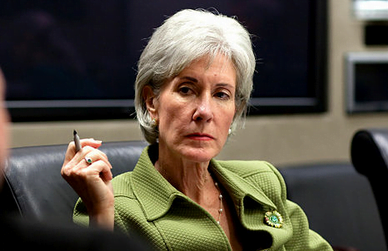This is a great speech by US Health and Human Services Secretary Kathleen Sebelius, who is in Geneva this week for the World Health Assembly. Sebelius offers some global context to America’s own struggles with providing adequecate health care to women and mothers.
In the United States, it wasn’t until the 1980s that women were even included in clinical trials. As a result, we had no idea what treatments or medicines were particularly effective for women. We didn’t know what might happen when a drug that had been tested on a 180-pound man, was given to a 110-pound woman.
Despite the progress we’ve made since then, disparities persist to this day. Women in America often pay more for health insurance, just because they’re women. And to add insult to injury, these plans often don’t even cover the basic care they need. In my country, just one out of 8 plans for those who buy their own insurance cover maternity care — as if getting pregnant were some very rare condition.
The result is that far too many women, who often serve as the health care gatekeepers for their families, go without care themselves.
Of course, we see the same thing around the world. Every two minutes, a woman dies from complications related to pregnancy or childbirth. The risks are even greater if you live in the developing world — where three out of every four women needing care for complications from pregnancy do not receive it.
Even in places where care is available, the demand is so great that it often stretches resources to their limits.
Last year I visited the maternity ward of the Mnazi Mmoja Hospital in Zanzibar, Tanzania. There were so few beds and nurses that some women had to share beds in the post-natal room. And others were discharged just hours after giving birth. The hospital was doing heroic work. And the women who were able to deliver there, were among the lucky ones. Yet, so much need still went unmet.
We know that when we under-invest in women’s health, whole families pay the price. When a mother dies the chance of her child dying within 12 months, increases seven fold.
The speech, which was before an audience of the World Medical Association, links America’s own struggles with health care inequality to the international fight for maternal and reproductive health. And in doing so, it shines a spotlight on what is arguably the most urgent item on the global agenda.
Women are gateways to their communities. Around the world, women are primarily responsible for managing water, nutrition, and household resources. They’re responsible for accessing health services for their families. Many of them are closely involved in actually providing health care for those around them. So by improving the health of women, we can improve the health of communities too.
Consider the story of Jemima, a woman living with HIV in rural western Kenya. At one point, the effects of her HIV got so bad she had wasted to 77 pounds. That’s when a volunteer brought Jemima, her husband, and her sick grandchild to a U.S. government-supported health clinic.
They went home with what is called a “Basic Care Package” – a bundle of low-cost health interventions, developed by public health researchers from our CDC Global AIDS Program to prevent the most debilitating, opportunistic infections among people living with HIV.
Jemima bounced back. She regained a healthy weight. And today she is a health leader in her community. She founded a group that offers emotional support and small loans to families touched by HIV. She sells health products to help support the eight sick and orphaned children she has adopted. And she has referred more than 100 HIV-infected men, women, and children to receive care at the same facility where she got help.
In Jemima, our investment saved not only a life, but a mother, a community leader, an entrepreneur and a health advocate.
What we know from our work with partners around the world is that improving the health of women and girls, unleashes powerful new opportunities – not just for them or their families – but for their communities and countries.
If we want to improve education, we should be giving our young women the healthy start they need to succeed in school. If we want to boost productivity, we can make sure women have access to health care, including family planning and other reproductive health services. If we want to build stronger communities, let’s enable women to teach their neighbors how to prevent disease and stay healthy.
Around the globe, our nations face many challenges. And investing in women’s health is one of the best ways we can address them together.
Of all the Millennium Development Goals, the goals set for maternal and reproductive health are fartest from reaching their targets, so it is particularly encouraging to see the top health official from the United States take on the cause.
You can read the whole speech here. And stay tuned for more posts about the on going World Health Assembly at the WHO this week.
